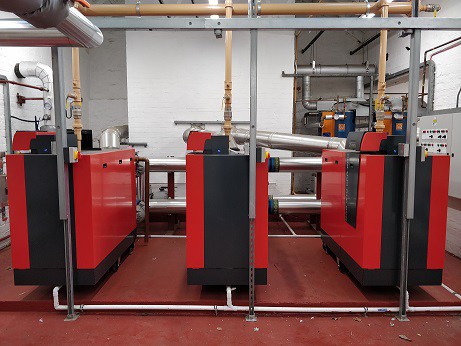Optimising efficiency

As we work towards full decarbonisation of heat, we mustn’t neglect the current opportunities to improve and optimise the efficiency of the heating and hot water provision in buildings. Baxi Heating’s Dan Martindale explains.
In recent weeks, the government has underlined the need to prioritise energy efficiency to provide a short-term boost to the economy and save building running costs. Energy efficiency is also a fundamental pillar in the UK’s path to net zero.
So what does that mean for heating? With 37% of UK emissions coming from heat in buildings, it’s a clear target for improvement. However, it’s also one of the toughest challenges, especially in the UK’s older building stock.
Hydrogen
To support the building services industry, manufacturers are busy innovating with longer-term technologies and techniques. We and others, for example, have been actively exploring the feasibility of integrating clean hydrogen into the future energy mix to offer a low disruption solution to low-carbon heating in our older building stock.
But action is needed everywhere, so we mustn’t neglect the current cost-effective opportunities to reduce energy demand and emissions from heat in buildings.
Accurate assessment of demand
Take a relatively straightforward boiler replacement. Upgrading any ageing or inefficient boilers to high efficiency condensing boilers and adding the appropriate controls has the potential to transform the energy performance of a building – even halving gas usage in our experience.
But now more than ever, it’s crucial to ensure that the result is as energy efficient as possible, so simple ‘like-for-like’ replacements should be avoided at all costs.
Given that extensions to a building or improvements to its fabric carried out since the previous boiler was installed are likely to alter demand, it’s essential to understand the building’s actual requirement. And as a building’s use or occupancy rate may have changed considerably post COVID-19, a reassessment is particularly relevant at the present time.
Step 2 – Cascade configurations
Once the heat demand has been identified, opting to spread the load over multiple, fully modulating boilers rather than one larger unit will optimise overall seasonal efficiency. The configuration increases the turndown ratio of the boilers and improves their modulation capability, while providing in-built redundancy for greater reliability. It also makes for easier maintenance – leading to higher lifetime efficiency – as the boilers are easier to isolate, remove and replace, reducing labour and downtime. And as the boilers are identical models, only one service kit is required for further cost savings.
Good manufacturers will offer site-assembled manufacturer cascade systems or even prefabricated turnkey rig systems for easier multi-boiler installation.
Prefabricated rig systems consist of a bespoke configuration of either wall hung or floor standing boilers, pumps, low loss headers or plate heat exchangers, as well as ancillary items such as a dosing pot, pressurisation unit and customised controls and panel to maximise efficiency.

With 25% of workers in the construction industry feeling that physical distancing measures are inadequate, according to a recent survey[1], it’s worth noting that these off-site factory fabricated solutions make it easier to prioritise on-site safety while ensuring the best quality outcome.
Step 3 – Separate out heating and hot water generation
With a clear understanding of the hot water demand in the building, we can then look to optimise system performance still further. In a traditional heating system, condensing boilers will often be specified to meet the requirements both for well-regulated space heating and a reliable supply of hot water. However, separating out hot water and heating generation may prove a more appropriate and effective option in certain buildings – particularly those with high hot water demand such as schools and hotels.
Why? Sizing the boiler(s) to meet peak demand in the colder months could lead to oversizing during the summer months when space heating is not typically required. Aside from energy waste, boiler efficiency can also be affected due to short cycling, low firing rates or an inability to operate in full condensing mode. Installing a dedicated fully condensing water heater to satisfy the hot water supply will remove the need to run boilers to heat water during the warmer months.
Driving down demand
Addressing the efficiency of the heating and hot water service should be a priority in every building to drive down energy demand and costs while maintaining the high comfort levels associated with improved productivity.
And with good manufacturers supporting with high quality, reliable total solutions and expert advice to ensure optimum performance, there’s surely no better time to act.
[1] https://www.randstad.co.uk/s3fs-media/uk/public/2020-07/Randstad-CPE-Covid-impact-analysis.pdf
Dan Martindale is Commercial Sales Director of Baxi Heating







